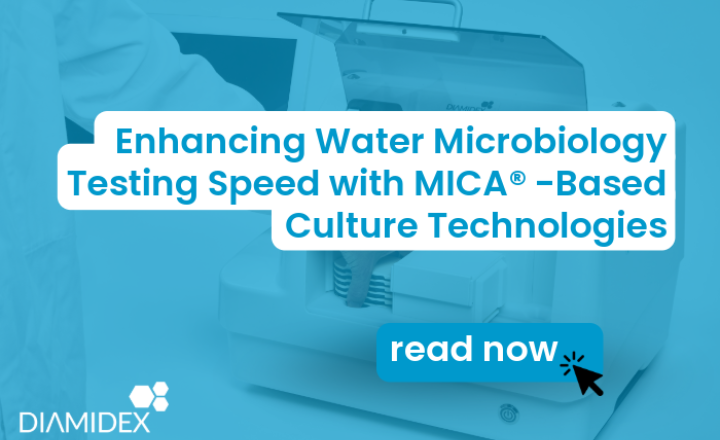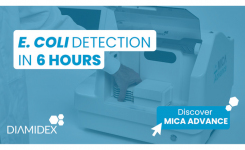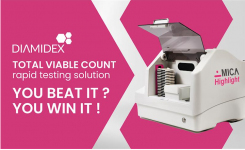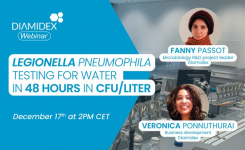It is no surprise that the steady growth of carbon footprint and its impact on climate change are a very serious threat to health worldwide, as over 200 health journals stressed in 2021. However, in an effort to reduce the carbon footprint, microbiology laboratories worldwide also have their share of emissions.
According to a 2022 study, consumables, specifically Petri dishes, are estimated to be the main source of CO2 emissions from microbiology laboratories. The number of Petri dishes needed for thorough and accurate testing varies from method to method and microorganism to microorganism; however, the industry's overreliance on this item may be the most important clue we have to reduce our share of CO2 emissions.
That is why Diamidex developed its Legionella pneumophila protocol. Focused on efficiency and results equivalent to the standard ISO 11731 method, this solution also significantly reduces the number of consumables used.
While the standard ISO method uses an average of 4.25 Petri dishes per water sample, Diamidex’s method only requires one—a four-time factor reduction on consumables. The savings made on waste disposal reduce CO2 emissions even more, which comes with a substantial saving on the related cost. Petri dish consumption might be the primary source of emissions; however, it is not the only one. Diamidex Legionella pneumophila solution carbon footprint engagement does not rely solely on consumables reduction.
Diamidex’s testing protocol for Legionella pneumophila also reduces the testing duration by five times and, therefore, the associated CO2 emission by the same factor. While the standard ISO method requires 10 to 12 days of incubation, manual counting, and complementary verification steps, this method only requires 48 hours of incubation, followed by automatic detection via our MICA counter.
The third most important factor in carbon footprint is the labor time involved in microbiological analyses. By reducing the overall technician time from 25 minutes to 4 minutes per sample on average, Diamidex’s solution cuts potential CO2 emissions as much.
These are all direct benefits of Diamidex’s Legionella pneumophila solution on carbon footprint. However, there are still consequences to consider, even if they are much more difficult to quantify using our own means.
By choosing a rapid microbiological method such as Diamidex’s protocol, a company, factory, or any other type of heavily regulated organization can significantly reduce its use of chemical treatments. Those chemical solutions are expensive and extremely toxic to the environment and are used in a preventive manner instead of testing to avoid any risk of contamination. With a rapid testing method, one can assess the risk of contamination quickly and precisely and thus opt for an appropriate response, saving money and easing the environmental impact.
As innovators and manufacturers of tomorrow’s microbial testing methods, we must ensure that laboratories and companies work with more responsible and sustainable protocols. The current norms, (ISO 11731 for Legionella, and others), exist as standards for quality and trustworthy results. But they exist to be challenged and built toward more efficient, quicker, and more sustainable methods.
Diamidex's protocol for Legionella pneumophila significantly reduces the carbon footprint of microbiology labs by cutting the use of petri dishes by 75%, reducing testing time from 10-12 days to 48 hours, and lowering processing time from 25 to 4 minutes per sample.
To learn more, visit our website and discover our MICA solutions, or use the Request Information button below to contact us directly.
Download the source document here.

























